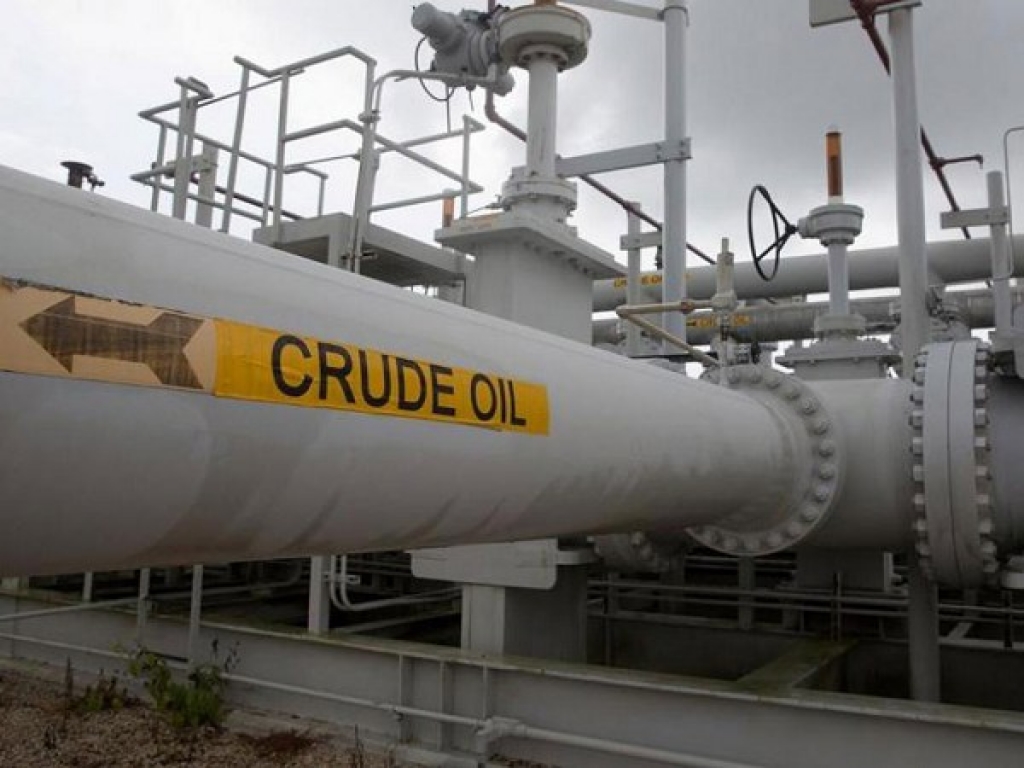 BOSTON: Oil pared gains on Wednesday after US crude stockpiles fell less than an industry group's expectations, but remained near a two-year high as the shutdown of one of the largest crude pipelines from Canada cut supply to the United States.
BOSTON: Oil pared gains on Wednesday after US crude stockpiles fell less than an industry group's expectations, but remained near a two-year high as the shutdown of one of the largest crude pipelines from Canada cut supply to the United States.
The restart of the 590,000 barrel-per-day (bpd) Keystone pipeline shut last week due to a spill could take several weeks. Operator TransCanada Corp has told clients it will cut deliveries on the pipeline linking Alberta's oil sands with US refineries by 85 percent through the end of November.
US crude peaked at $58.09 per barrel earlier in the session, the highest since July 2015, on concerns over reduced supplies on the Keystone pipeline and after the American Petroleum Institute (API) late Tuesday reported a 6.4 million-barrel crude drawdown for last week.
By 1:38 p.m. (1838 GMT), US West Texas Intermediate crude futures were trading at $57.83, up $1, or 1.8 percent, after weekly government data showed crude inventories fell 1.9 million barrels.
Crude stocks at the Cushing, Oklahoma, delivery hub for WTI fell by 1.8 million barrels, the US Energy Information Administration said.
Brent crude rose 55 cents, or 0.9 percent, to $63.12 per barrel, after earlier trading as high as $63.39.
"Current price levels are still inciting US companies to produce more, which will remain a concern for the OPEC ahead of the cartel's November meeting," said Abhishek Kumar, senior energy analyst at Interfax Energy's Global Gas Analytics in London.
US energy companies this week added oil rigs, with the monthly rig count rising for the first time since July. Drillers added nine oil rigs in the week to Nov. 22, bringing the total count up to 747, General Electric Co's Baker Hughes energy services firm said. <RIG-OL-USA-BHI>
The front-month US crude moved to a premium to the second-month <CL-1=R> for the first time in almost three years after reports of the Keystone delivery cuts. The bullish structure, known as backwardation, has not been seen since Dec. 19, 2014.
A backwardation prompts the selling of crude sooner, rather than storing it, which could encourage crude exports.
Additionally, exports could be incentivized by a wide discount for US crude versus Brent crude. Brent's premium to WTI narrowed on Wednesday, falling by 49 cents or 8.5 percent to $5.21 a barrel but remained in the range sustained for the past three months, which have seen the widest premiums in two years.
"A wide price premium of Brent over WTI crude will encourage more exports of US oil over the coming weeks," Interfax's Kumar said.
"Going forward I think those export numbers are going to be what people are going to be watching," said Gene McGillian, vice president at Tradition Energy in Stamford, Connecticut. "The more oil we export in the global market, the more that offsets the effect of the OPEC and Russian cut."
US supplies have been a key factor in determining how quickly a global supply overhang can be reduced. The tug-of-war between concerns over supply cuts due to the Keystone delivery cuts and more robust overall inventories shows how the oil market is grappling to untangle the US supply picture.
Oil has also been supported by an effort led by the Organization of the Petroleum Exporting Countries to end a global supply overhang by restraining output.
The deal to curb production expires in March but is widely expected to be extended at a Nov. 30 meeting.
"There is growing consensus that OPEC will extend their production cut deal at the end of the month. This confidence along with the current geopolitical environment has kept ICE Brent trading firmly above $60 per barrel," Dutch bank ING said.
"However, an outcome at the OPEC meeting which falls short of market expectations will likely lead to a selloff, and given the large speculative long in Brent, this could be fairly severe," it added.
























Comments
Comments are closed.